
| From Wyoming Tales and Trails This page: Campbell County continued, Lightning Flat. |
 |

| From Wyoming Tales and Trails This page: Campbell County continued, Lightning Flat. |
 |
|
|
|
About This Site |
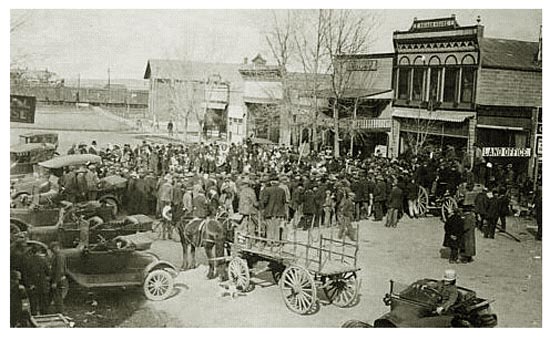 Land Sale, Gillette, 1919 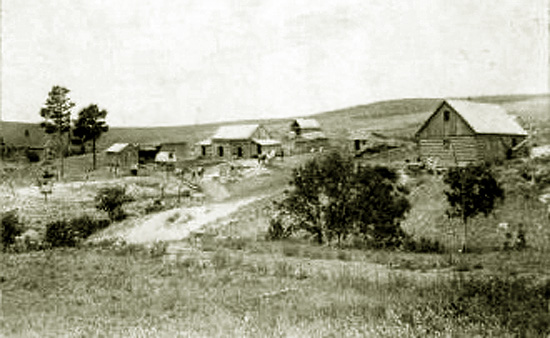 Jay U. Clark Homestead, Crook County, approx. 1912. Some homesteads continued through multiple generations until changes in economic use of the land made the homesteads more valuable for other purposes. 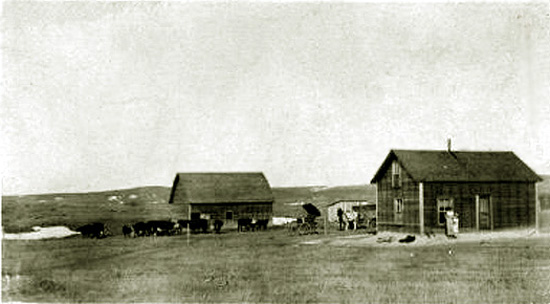 Oscar Seth Leonox homestead, east of Gillette, approx. 1912. In the 1970's some of the small ranches and farms in Campbell County that had survived through drought and depression became parts of coal reserves. Such was the homestead depicted in the next photo. The particular homestead lasted for three generations until sold for its coal.
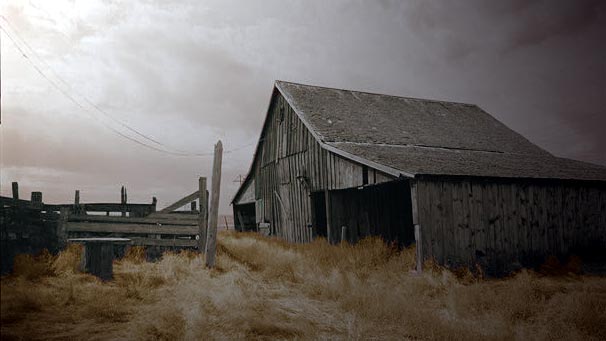 Abandoned barn, south of Gillette. Along the northern border of Wyoming in Crook and Campbell Counties and across the border in Montana's Powder River and Carter Counies, the honyockers (see Dry farming) came to settle on the short grass prairie. Towns arose and with the drought that came in the late 1920's, faded and died. In extreme Northeast Campbell County and Northwest Crook County on the state line, two such towns arose, Rockypoint and Lightning Flat. And across the border in Carter County, Mondtana, the town of Ridge arose and then faded.
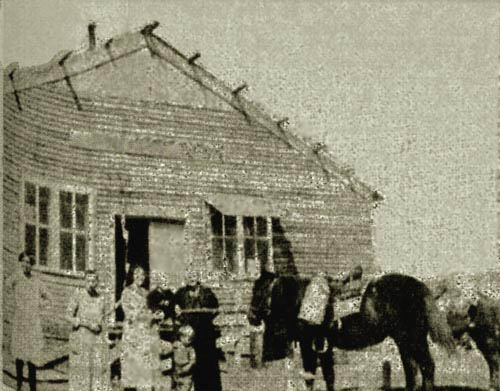 Community Hall, Lightning Flat, Wyoming, 1923.
Lightning Flat was located in an area of short grass prairie, northwest of Devil's Tower. The town was about eight miles northeast of Rockypoint and a five miles south of Ridge, Montana, near the headwaters of the Gammon Prong of the Little Missouri and the aptly named Prickly Pear Creek. Both are intermittent water courses. Nearby is the Scott Reservoir, itself short of water for good parts of the year. The reservoir is named after early homesteaders who settled immediately south of the Montana state line. To the west is a line of low lying hills marking the divide between the Belle Forche and Powder River. The Belle Forche, itself, is regarded as the western boundary of the Black Hills. Prior to homesteading, the area was a part of the customary range for a number of cattle companies including the Standard Cattle Company owner of the 101. The Standard Cattle Company, however, was in a sense migratory, It first was located in Texas and was established in Wyoming and Montana in 1888 when 3-4,000 cattle were trailed to Crook County. Later, the Wyoming unit was used only as a calf ranch and two year cattle were fattened in Montana. At the turn of the century, the main headquarters was moved to Nebaska and it became essentially an early feed-lot operation boasting a barn that would house three thousand head at a time, fed in part on sugar beets. Thus, northeast Crook County was opened for homesteading. Besides, the Scotts who had numerous claims along the northern part of Crook County, Paul Yeoman came and started a weekly newspaper, the Ligtning Flat Flash, engaged in the freighting business and was a land commissioner. E. W. Lau and had one of the few steam traction engines in the area. Margaret Cooper had a store. Leon Alderman sold groceries. Gasohol could be obtained from the WMAX Fair Price service pump in front of the store. Ethel Yeoman was postmaster. Stage service to Rockypoint eight miles to the south was available on Wednesdays and Saturdays. A roundtrip took all day. Times turned tough. Dry farming on short grass prairie is a risky business at the best. Across the border in Carter County, the homesteaders attempted to eliminate the sage by hoeing it up in the winter when the ground was frozen. Population in Carter County is today one-third of that at the height of the homesteading craze. In the 1920's, the Scott name began appearing in the deliguent tax lists published in the Sundance Times, ultimately to appear in lands to be sold for taxes. In 1927, the Flash discontinued publication. The Flash was typical of many rural weekly newspapers. It was more like a neighborhood newsletter which kept loneliness on the prarie hopefully at a minium. It covered the comings and goings of neighbors in Lightning Flat, Ridge, and Swartz Divide. Front page news from the January 13, 1922, issue of the Flash was typical:
In 1936, Mrs. Yeoman rsigned as postmaster and was succeeded by Grace Scott. In the same year, the grocery store, which had opened in 1922, closed and its stock of goods was sold to a store in Ridge. The building was finally torn down in 1944. The grasshoppers came. Grace's term was short. In 1937, the post office closed and mail had to be picked up at Rockypoint or Ridge. The town was essentially dead.
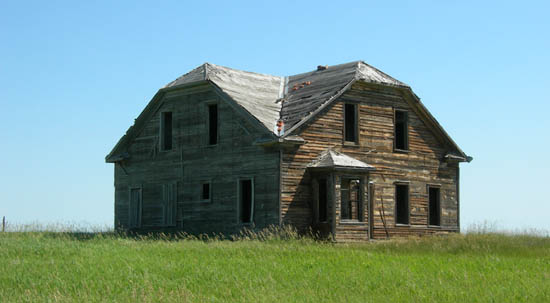 Abandoned house, Lightning Flat, Wyoming. Photo courtesy FindingBrokeback.com.
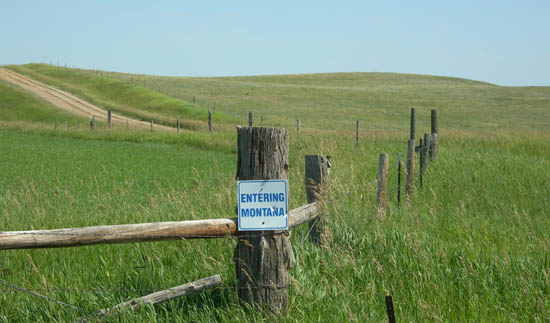 Montana boundary, Lightning Flat, Wyoming. Photo courtesy FindingBrokeback.com. Next Page: The Black Hills of Wyoming |